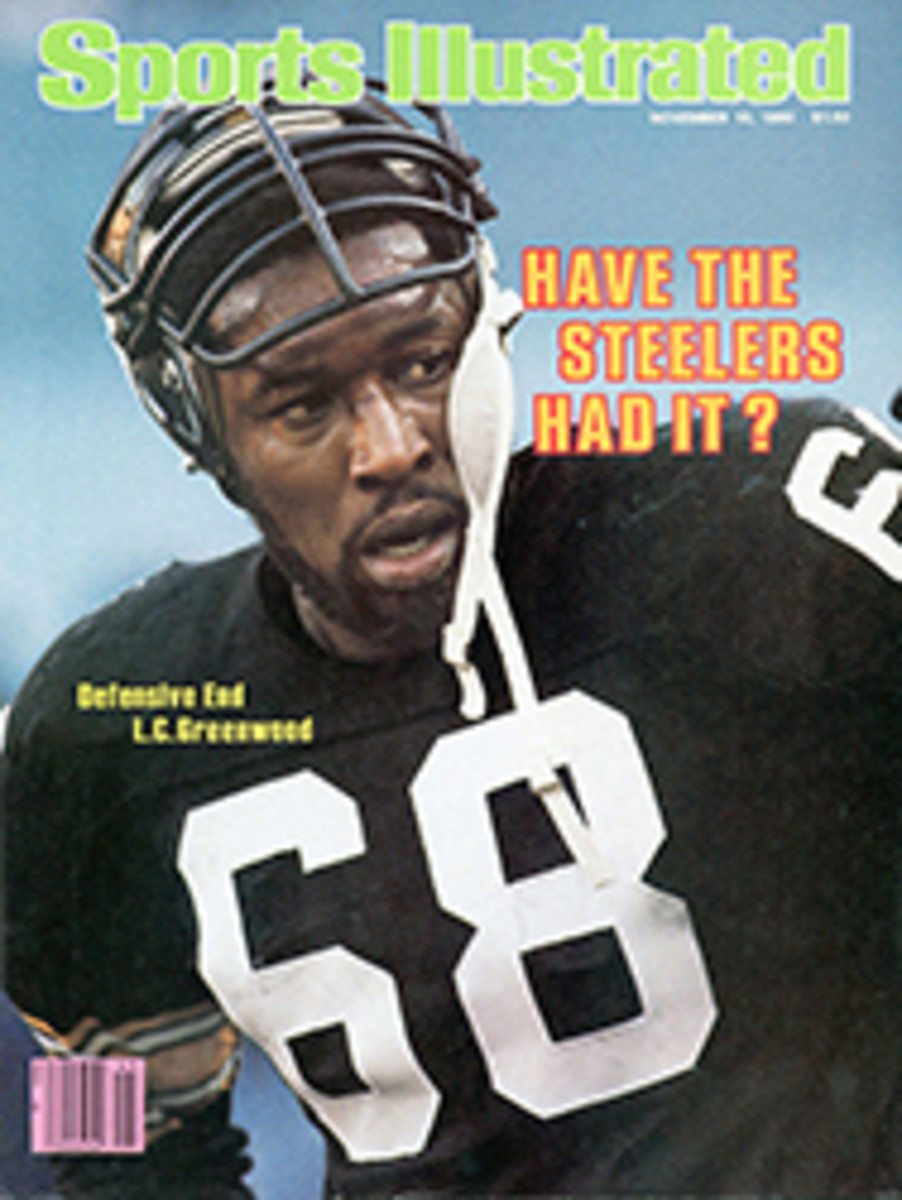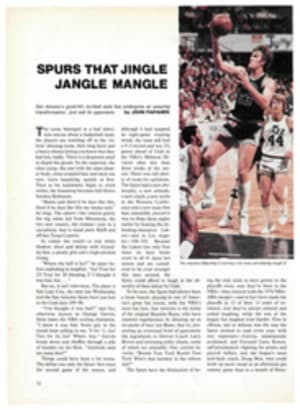
AT LAST, ALL ACTION AND NO TALK
It's an irritation as old as televised sports. During the first telecast of an athletic event, a dim and blurry transmission of a baseball game between Columbia and Princeton on May 17, 1939, the announcer, the late Bill Stern, heard again and again the impassioned plea of his director, "Shut up! If they can see it, don't say it." They really couldn't see much of anything on that first primitive telecast. A critic for The New York Times wrote, "The players were best described by observers as appearing 'like white flies.' ...When the ball flashed across the grass it appeared as a cometlike white point. The announcer saved the day, otherwise there would be no way to follow the play to tell where the ball went.... The announcer revealed whether it was a foul ball or a hit...." Nevertheless, many years later Stern confessed to being the original sinner of a long, long line of TV over-talkers. "I had no idea when to keep my big, fat, flapping mouth shut," he said.
More than 40 years later, the big, the fat and the flapping are still with us. The specific irritations range from a standard mind-numbing polysyllabic Cosellism ("There has been a veritable plethora of eminently catchable balls" or what have you) to the microscopic small talk indulged in by Tom Brookshier and Pat Summerall ("So when's your plane, Tom?" "Four o'clock." "Whew, that's a tight connection." "Yep. That's what makes life exciting." "Yep, it sure is." "Yep. When is your plane, Pat?").
Network sports producers have long been concerned about the shortcomings of the audio portion of telecasts and have tried everything to improve the quality of talk. Everything, that is, except the most golden idea of all—silence. And that is next on the agenda: on Dec. 20 NBC will present essentially voiceless coverage of the Dolphins-Jets game. The silent broadcast is the brainchild of Don Ohlmeyer, 35, executive producer of NBC Sports for the past three years, and it is an especially exciting idea in that it presents a potentially revolutionary reversal of television's dictum that more is better. As Ohlmeyer says, "This business tends to admire quantity too much. If two announcers work well, three will work better. I have tried to operate differently at NBC. When we did the Super Bowl in 1979, I killed two cameras and did the game with the same number we used during the season. We won an Emmy for our coverage. And when it has come to announcers, we've constantly striven to present a less-is-more approach. I think it has worked."
True enough. NBC's NFL talk teams—Dick Enberg and Merlin Olsen, Don Criqui and John Brodie, Charlie Jones and Len Dawson—are generally the least obtrusive and most effective in the business. The network's World Series announcers, Joe Garagiola, Tony Kubek and Tom Seaver, were also relatively restrained. By contrast, ABC's Keith Jackson, Don Drysdale and Howard Cosell offered a veritable plethora of eminently avoidable words during the National League baseball playoffs. (ABC's American League team of Al Michaels, Billy Martin and Jim Palmer was concise and informative.)
"There's a tendency by some announcers to shout over the top of the big moment," says Ohlmeyer. "We tell our guys, 'When something big happens, be quiet. Let the crowd at home savor it.' During the Series there were a couple of home runs after which Joe and Tony and Tom sat in silence for 30 or 40 seconds. Merlin and Dick go to great lengths not to talk. There really are differences among announcers, but people tend to lump them together, as if all of them were clones from Monday Night Football."
A talkless telecast has some weak points, of course. If there's a complicated, controversial play, how will the viewers know what has happened? Will replays be illuminative without a voice pointing out the nuances? Will the necessarily increased use of written information superimposed on the picture prove to be as irritating as excessive talk?
"There are plenty of production problems," says Ohlmeyer. "We won't know how the silent treatment works, or even how best to do it, until we are actually doing it. We will have to use many more graphics to keep people informed, and maybe the referee will have to explain more thoroughly what has happened on any confusing penalties. We are going to juice up the audio, using new directional 'rifle' microphones to pick up the crunch of bodies, the quarterback calling signals."
Ohlmeyer has discussed his idea with NFL Commissioner Pete Rozelle. "We didn't have to ask Pete for his blessing," Ohlmeyer says, "but I wouldn't have considered this without talking it over with him first. Pete wants to be sure that we're not doing something derogatory to football, that it's really a legitimate experiment."
In fact, the experiment won't offer a totally speechless telecast. NBC's low-key commentator Bryant Gumbel will come on periodically for 30 seconds or less to recapitulate the action for newly tuned-in viewers and to "sort of reset the flow of the game," as Ohlmeyer puts it.
Ohlmeyer doesn't see his experiment as the harbinger of an era of blessed silence in sports television. "This isn't necessarily the wave of the future," he says. "We aren't doing it as an alternative to announcers. I think our guys are the best around, and we're surely not trying to put them out of business. In fact, I have a feeling that once people have watched this thing, they may come away with a new appreciation for the role a really good announcer plays."
PHOTO
OHLMEYER'S GRAND EXPERIMENT MAY SHOW THAT LESS IS MORE

